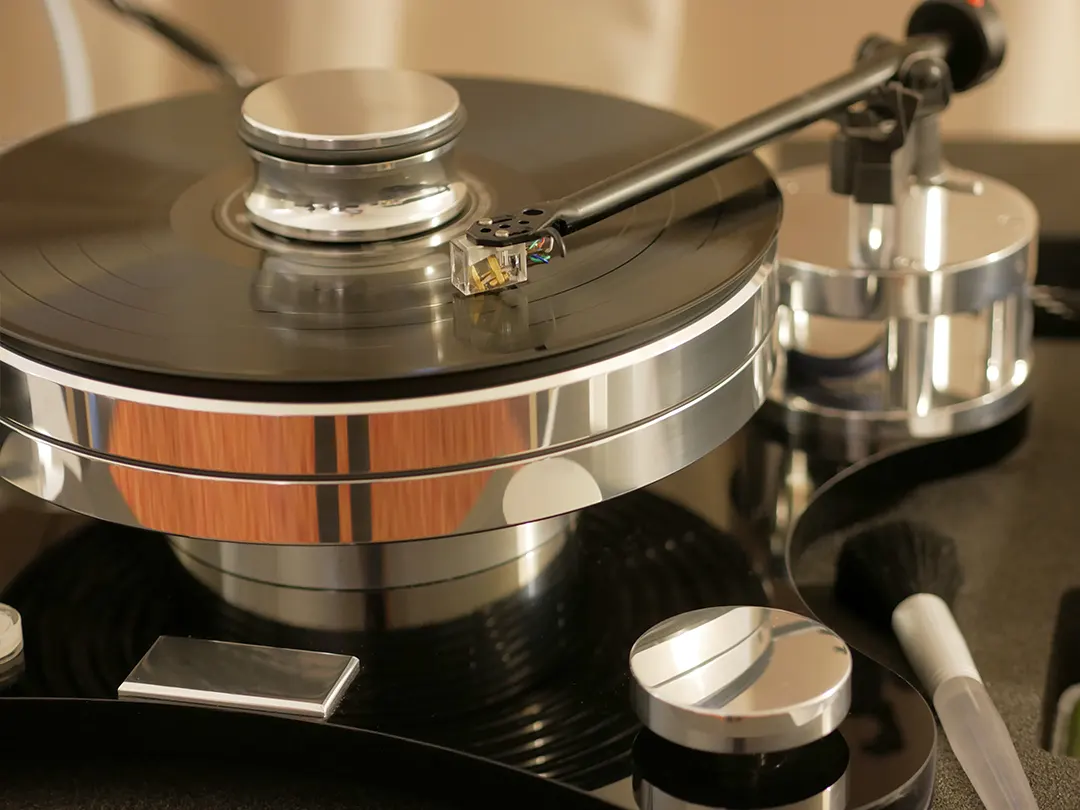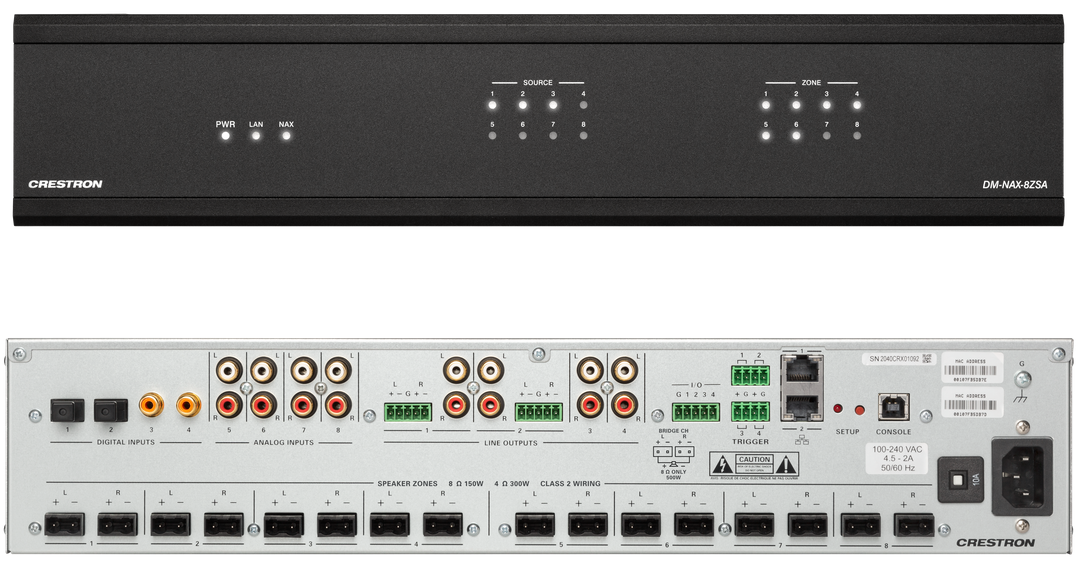There’s something nostalgic when listening to music from a vinyl record. It could be the intentional time it takes to move it from the shelf to the turntable, the sound of the gently purring motor and crackling speakers, or the sight of a tonearm slowly gliding to the center. The right system for your home will take your music listening experience to a higher level, and luckily for audiophiles everywhere, the recent resurgence of vinyl means affordable options are becoming more commonplace. Here are several recommendations from our experts at Xssentials.
Belt-Drive VS Direct-Direct Drive?
Most turntables can play your record at 331/3, 45, and 78 revolutions per minute (RPM); your vinyl will list which speed is ideal for its content. The disc sits within the plinth, which must lay atop a flat, sturdy surface to avoid the vibrations that pull the forearm out of the track and scratch your record. Turntables will have either a belt or direct drive. If your system has a motor that torques an elastic belt connected to a spinning platter, you have a belt-drive turntable. Alternatively, a direct-drive turntable has a motor that directly rotates the platter; its setup makes it the preference of DJs and performers. Most audiophiles and record collectors opt for the belt-drive turntable because it’s the best bet for the home listening market.
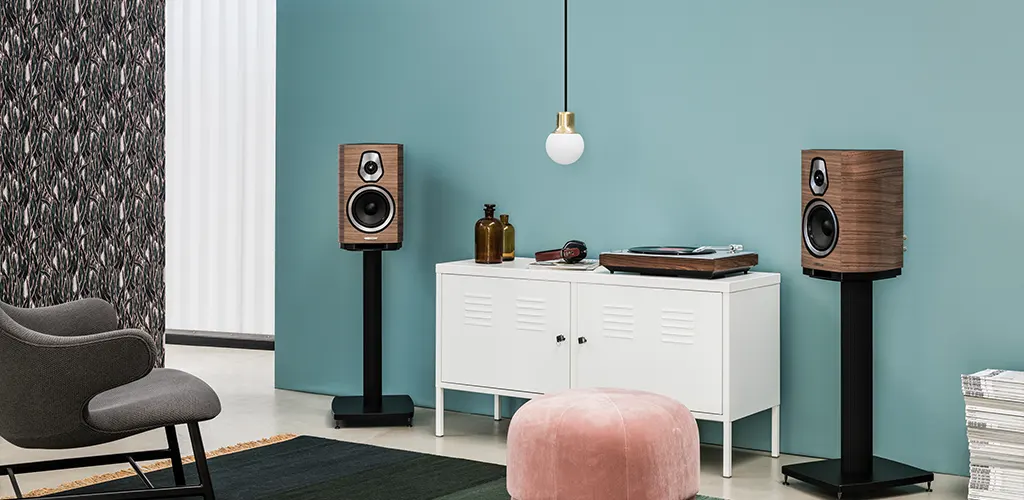
Moving Magnet or Moving Coil Cartridge?
Another vital aspect of your turntable is the cartridge, which is the tool that converts the stylus’ physical vibrations within the grooves into electrical signals. Cartridges come equipped with either a moving magnet (MM) or a moving coil (MC). The MM is the most common, with a diamond stylus that pushes vibrations down a cantilever. This is attached to a magnet that interacts with a pair of tiny coils, creating the electrical signal that travels to your amplifier. The difference within the MC cartridge is that it lacks a magnet, so the cartridge is lighter and can detect more changes within the grooves of your record. We recommend you keep the different weights in mind before playing your first records; you don’t want to accidentally create scratches.
Does Your Turntable Have a Phono Preamp?
What makes the vinyl listening experience different from that of other systems? The answer is the phono stage! Because of the way records are manufactured, each player possesses a weak phono signal output that suppresses bass frequencies and boosts the treble. Wider grooves are necessary for low frequencies, so removing them can save physical space, maximizing runtime on both sides of the vinyl. The downside to these omissions means that the phono signals cannot be heard, so it needs conversion into a frequency-balanced “line level” signal for multiple sources. Here is where a phono preamplifier works its magic; it reduces the trebles and raises the bass frequencies into an audible range. A significant number of record players come with built-in phono preamps, so purchasing an external one may not be necessary. Check your record player, and if it has a Line output on the Phono/Line selector switch in the back, you’re already set to rock’n’roll!
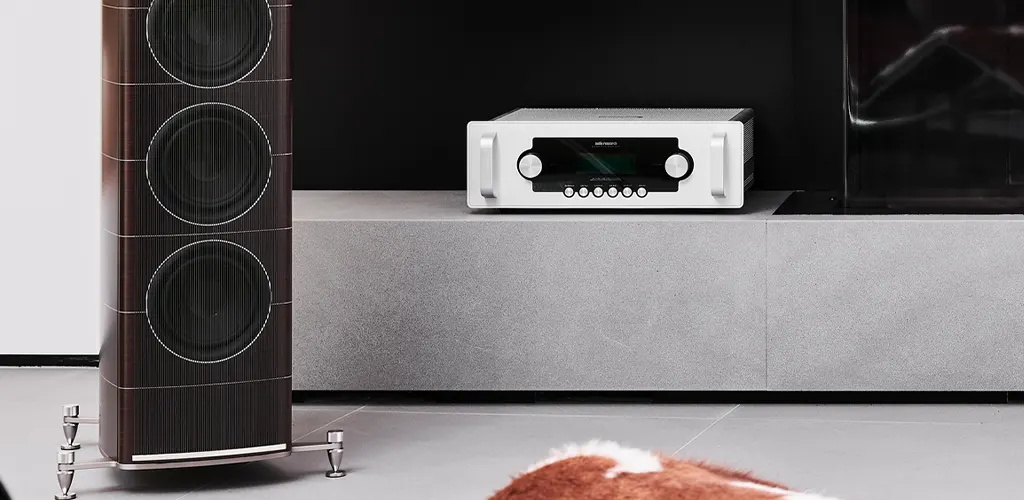
Should You Add an Amplifier/ Receiver
The “line level” signal from the preamp runs to the amplifier, which acts as your system’s engine that boosts the signal to passive speakers. A stereo amp acts as the central unifier of your sources, equipped with multiple inputs for CDs, cellphones, vinyl, and more. Your amplifier enhances the dynamic range and improves the sound quality of your music. There are two kinds of amps: integrated standalone or pre/power separate amp. The smaller integrated model provides convenience by incorporating the circuity for the preamp and speaker-driving power into one unit. Check your integrated model to know if it already has a built-in phono preamp. There are two separate units with the pre/power setup; audiophiles choose this option for maximum flexibility during future upgrades. Whichever you choose, a sturdy amplifier is an important choice; it can power your system for decades.
Passive or Active Speakers
The final phase of your vinyl record system is the speaker stage, which can be active or passive. If you’ve chosen the preferred model by audiophiles, passive speakers, the line-level signal will pass through the stereo amplifier/receiver as described above. This extra step creates an exponentially boosted audio from the phono preamp to the amp and directs the signals to the appropriate speakers. Alternatively, an active speaker should never be connected to an amplifier; it requires a separate dedicated power outlet. The signal travels directly from the preamp to the main speaker, is amplified there, and then is routed to a passive speaker. While it’s easier to set up and manage the active speaker setup due to getting an amp and high-quality speaker in one unit, it can be considered the weaker option to a standalone amp.
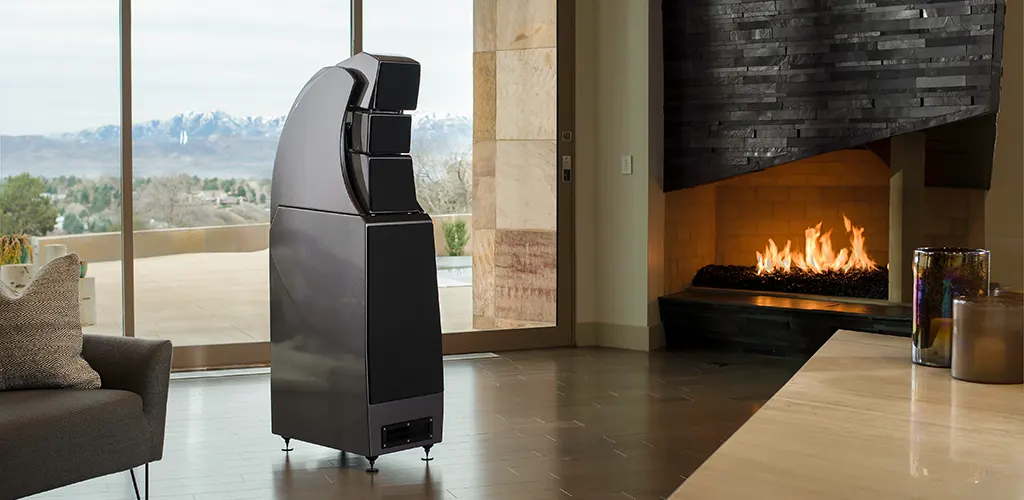
Do You Have the Correct Cables and Wires?
You’ll need the final wires to connect every piece, such as RCA cables that will attach your turntable to your phono preamp, amplifier, and speakers. The cables should have one red and one white connector on each end to plug into the appropriate sockets in the chain of sound. In a passive speaker setup, two simple wires per speaker are all you need to connect with your amplifier. The back panels of your devices will tell you the respective speaker-wire terminals you need to use.
With your newfound knowledge, it’s time to find the perfect turntable system. If you’re feeling excited or unsure of which options you’d like, our team of professionals at Xssentials is happy to help you design and install the setup perfect for your home. Contact us to begin today!
